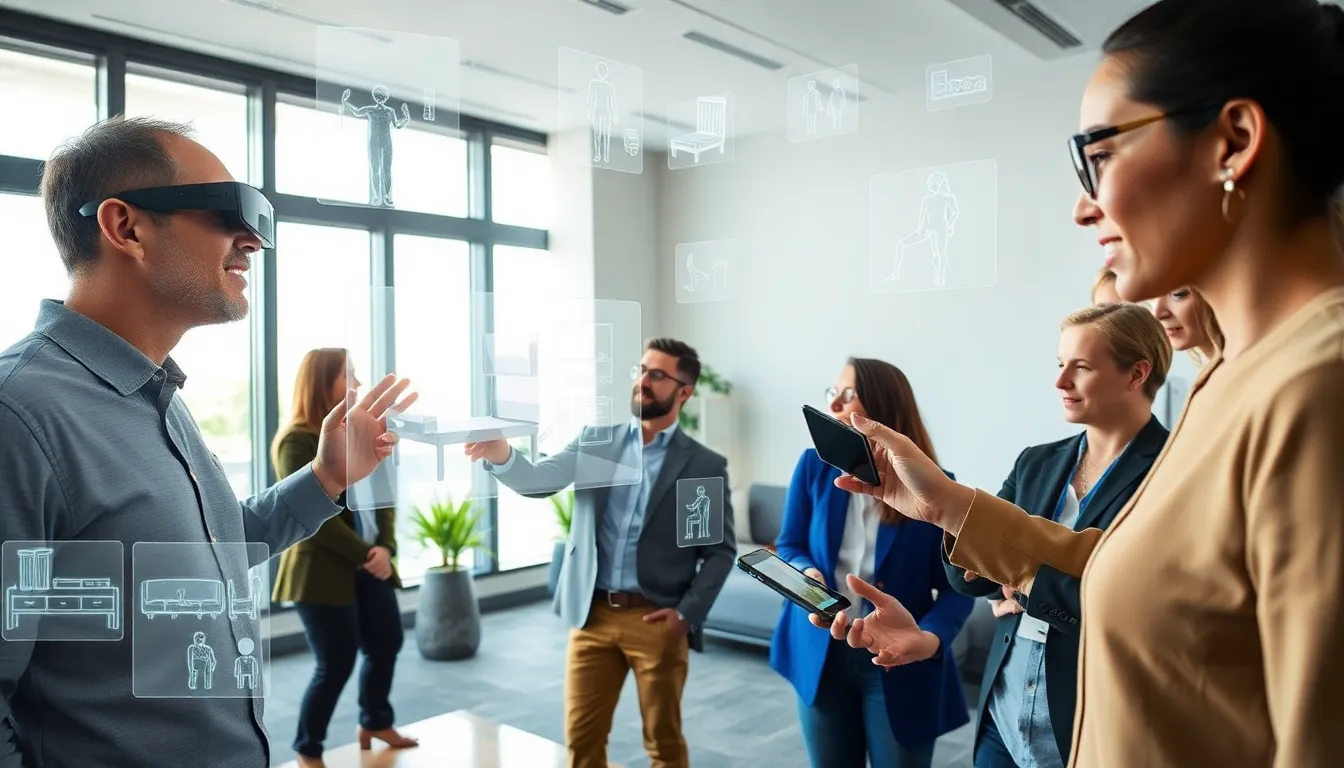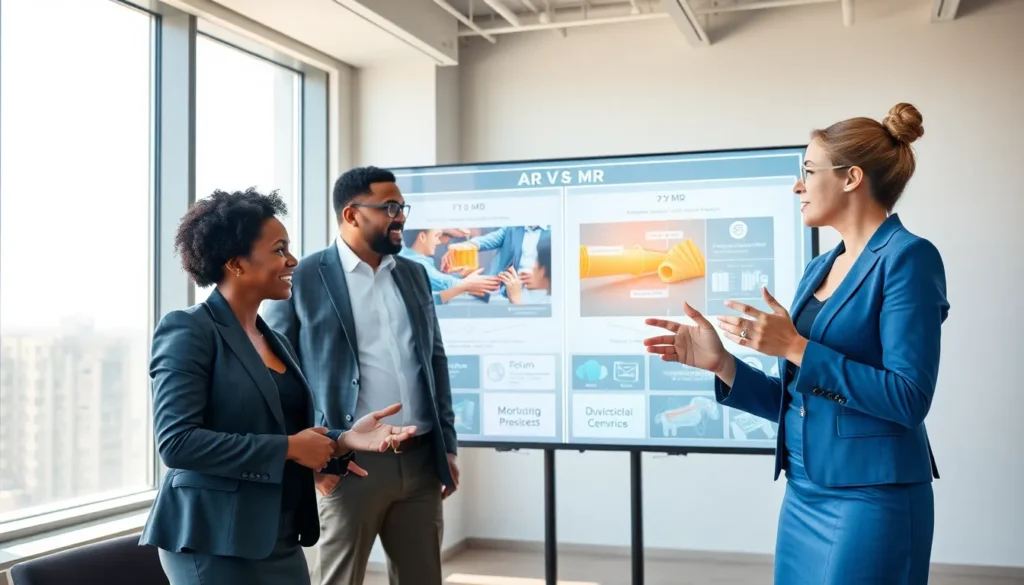Table of Contents
ToggleEver found yourself wondering whether you’re wearing a virtual hat or just daydreaming about one? Augmented reality (AR) and mixed reality (MR) are here to confuse, and delight, you with their dizzying blend of digital and real worlds. In this text, we’ll unravel the differences between these fascinating technologies while keeping things professional (with a dash of wit, of course). Prepare for a journey that dives deep into features, applications, and what the future holds for AR and MR.
Understanding Augmented Reality

Key Features of Augmented Reality
Augmented reality enhances the real world by overlaying digital information, creating an engaging interplay between physical and virtual environments. One of the standout features of AR is its ability to use devices like smartphones or smart glasses to project images and data onto real-world settings. This technology recognizes spaces and objects, allowing users to seamlessly interact with both environments.
Plus, AR offers real-time interaction, meaning that users can see how digital elements blend with their reality without requiring specialized equipment. This makes it highly accessible, allowing anything from live navigation overlays to interactive gaming experiences. AR applications are becoming increasingly rich and immersive, enhancing everyday tasks and hobbies alike.
Applications of Augmented Reality
The applications of augmented reality are vast and versatile. In retail, brands use AR to let customers visualize products in their own spaces before making a purchase, think of virtually placing furniture in your living room.
In education, teachers leverage AR to create interactive learning experiences, making complex subjects more tangible. Imagine exploring ancient civilizations through an engaging AR app, where historical figures pop up around you.
Besides, industries like healthcare employ AR for surgical visualization and patient education, allowing for more informed decisions. Even in entertainment, AR has transformed the way audiences interact with content, creating immersive environments where users become part of the story.
Understanding Mixed Reality
Key Features of Mixed Reality
Mixed reality combines elements of both augmented and virtual realities, creating a more complex interaction between digital and physical worlds. Unlike AR, mixed reality integrates the virtual and real worlds to produce experiences that can act independently of the user.
One of the primary features of MR is spatial awareness, users can navigate their environments while virtual objects are placed in them. Through sophisticated sensors, devices can map out a physical space, ensuring that digital overlays react to real-life changes. This provides a far more immersive experience compared to simple overlays characteristic of AR.
Applications of Mixed Reality
Mixed reality boasts impressive applications across various domains. In architecture, for instance, professionals use MR to visualize projects before breaking ground, allowing for real-time adjustments during the planning stages. Imagine walking through your future home while it’s still on the drawing board.
In the gaming world, mixed reality innovations create dynamic environments where users can interact with digital characters as if they were physically present, think Pokémon, but they’re not just lingering on your screen. Meanwhile, the corporate sector is beginning to harness MR for training purposes. Employees can embark on simulated training programs that feel remarkably lifelike, preparing them for complex tasks or scenarios.
Comparative Analysis of Augmented Reality and Mixed Reality
Use Cases and Impact in Different Industries
The comparison of augmented and mixed realities demonstrates their unique strengths across various industries. For instance, in healthcare, AR can be used for patient education, allowing clinicians to visually guide individuals through complex procedures. MR, on the other hand, immerses trainees in lifelike environments where they can practice their skills hands-on without real-world consequences.
In tourism, AR apps can enhance experiences by providing historical context or navigation tips, wouldn’t it be great to have a digital tour guide right at your fingertips? Mixed reality can elevate that experience further by merging virtual landmarks with the existing scenery, creating a cohesive experience where users actively participate in unfolding narratives.
In manufacturing, AR helps workers visualize assembly processes, while MR allows for collaborative problem-solving among global teams, giving every member a chance to contribute to the project’s physical manifestation.
Future Trends and Developments
The future of augmented and mixed reality looks promising. Analysts predict an exponential growth in these sectors, especially with advancements in hardware and software technologies. Expect improvements in user interfaces, leading to more intuitive experiences. Wearable devices are becoming more sophisticated, providing seamless transitions between AR and MR functionalities.
Also, as artificial intelligence continues to evolve, integration will foster new applications previously thought impossible. Imagine augmented reality translating languages in real-time during international communications, or mixed reality making remote collaboration indistinguishable from in-person meetings: technology evolving to keep human connections strong.
Investments in both fields are ramping up, hinting at the potential for revolutionary changes that can impact a wide range of industries, from education to entertainment. As companies venture into this dynamic landscape, the possibilities become nearly limitless.




